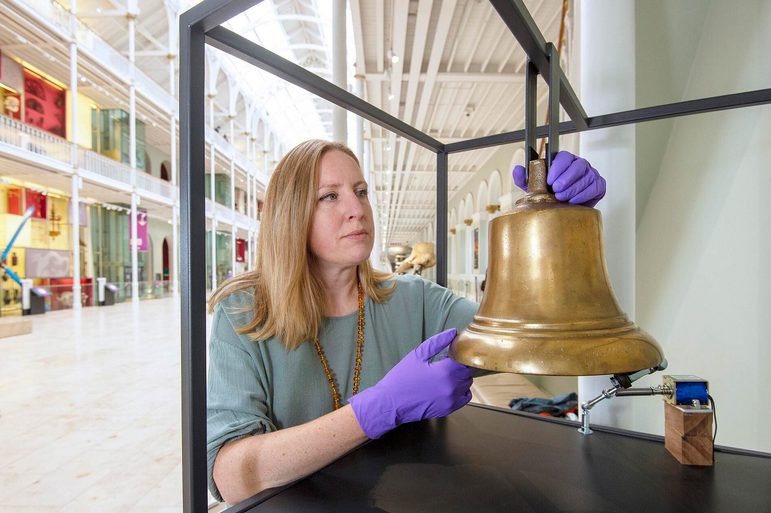
About Extinction Bell
Luke Jerram's Extinction Bell raised awareness of biodiversity loss.
The Extinction Bell was a work by Bristol-based artist Luke Jerram. A fire engine bell from our collection was adapted to toll at random intervals 150-200 times per day. Each ring of the bell symbolised the extinction of a species, representing the number being lost every 24 hours (according to a 2007 report from the UN).
Scientists estimate that the current extinction rate of plant, fungi and animal species is nearly 1,000 times more than the ‘natural’ or ‘background’ rate.
Some biologists say this is greater than anything the world has experienced since the dinosaurs vanished around 65 million years ago. We are the main cause of these extinctions largely through habitat loss and global climate change.
By the time this display closed on 9 January 2022, the bell rang up to 21,000 times.
Why a bell?
Bells call us to action and communicate a sense of emergency.
Luke Jerram’s artwork used this universal sound to symbolise extinction events, which are happening across the world, but which we don’t see.
This Extinction Bell used a 19th-century brass fire engine bell from our collections, chosen by our curators. It was originally used on a horse-drawn fire engine from St Mary’s Isle estate near Kirkcudbright. It originally warned of danger from fire – here it alerted us all to the alarming rate of species loss caused by human activities.

You might also like
- Discover

Where do taxidermy animals come from?
If you’ve ever visited the Natural World galleries at the National Museum of Scotland, you will be no stranger to animal taxidermy. From echidnas to elephants, voles to vampire bats, it’s quite the spectacle. But have you ever wondered…Keep reading - Discover

Tyrannosaurus rex
It is 66 million years since Tyrannosaurus rex (T. rex) actually walked the earth. But the T. rex at the National Museum of Scotland brings people as close as possible to appreciate the scale and power of the real thing.Keep reading - Discover

The folky tale of the mineral tacharanite
This mineral got its name from how it behaves when exposed to air, but with a Scottish folkloric twist!Tacharanite occurs in nature as bundles and little spheres of silky white fibres in altered basalt rocks. It's found in several…Keep reading